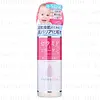What's inside
What's inside
 Key Ingredients
Key Ingredients

 Benefits
Benefits

 Concerns
Concerns

No concerns
 Ingredients Side-by-side
Ingredients Side-by-side

Saccharomyces/Xylinum/Black Tea Ferment 60%
Skin ConditioningWater
Skin ConditioningPropanediol
SolventGlycerin
HumectantDipropylene Glycol
Humectant1,2-Hexanediol
Skin ConditioningBetaine
HumectantGlycereth-26
HumectantChondrus Crispus Extract
Skin ConditioningSaccharum Officinarum Extract
MoisturisingTheobroma Cacao Seed Extract
AntioxidantCynanchum Atratum Extract
Skin ConditioningSodium Hyaluronate
HumectantAlthaea Rosea Flower Extract
Skin ConditioningHydrolyzed Hyaluronic Acid
HumectantHyaluronic Acid
HumectantPanthenol 1%
Skin ConditioningHydroxyethyl Urea
HumectantGlyceryl Glucoside
HumectantAcrylates/C10-30 Alkyl Acrylate Crosspolymer
Emulsion StabilisingEthylhexylglycerin
Skin ConditioningButylene Glycol
HumectantTromethamine
BufferingDextrin
AbsorbentAllantoin
Skin ConditioningGlucose
HumectantBeta-Glucan
Skin ConditioningHydroxypropyltrimonium Hyaluronate
Tocopherol
AntioxidantSodium Acetylated Hyaluronate
HumectantHydrolyzed Sodium Hyaluronate
Skin ConditioningSodium Hyaluronate Crosspolymer
HumectantPotassium Hyaluronate
Skin ConditioningSaccharomyces/Xylinum/Black Tea Ferment 60%, Water, Propanediol, Glycerin, Dipropylene Glycol, 1,2-Hexanediol, Betaine, Glycereth-26, Chondrus Crispus Extract, Saccharum Officinarum Extract, Theobroma Cacao Seed Extract, Cynanchum Atratum Extract, Sodium Hyaluronate, Althaea Rosea Flower Extract, Hydrolyzed Hyaluronic Acid, Hyaluronic Acid, Panthenol 1%, Hydroxyethyl Urea, Glyceryl Glucoside, Acrylates/C10-30 Alkyl Acrylate Crosspolymer, Ethylhexylglycerin, Butylene Glycol, Tromethamine, Dextrin, Allantoin, Glucose, Beta-Glucan, Hydroxypropyltrimonium Hyaluronate, Tocopherol, Sodium Acetylated Hyaluronate, Hydrolyzed Sodium Hyaluronate, Sodium Hyaluronate Crosspolymer, Potassium Hyaluronate
Water
Skin ConditioningGlycerin
HumectantButylene Glycol
HumectantDipropylene Glycol
HumectantPPG-10 Methyl Glucose Ether
Skin ConditioningPEG-75
HumectantCeramide EOP
Skin ConditioningCeramide NP
Skin ConditioningCeramide AP
Skin ConditioningHydrolyzed Collagen
EmollientSodium Hyaluronate
HumectantCholesterol
EmollientPhytosphingosine
Skin ConditioningGlycosyl Trehalose
Emulsion StabilisingHydrogenated Starch Hydrolysate
HumectantPropylene Glycol
HumectantSodium Lauroyl Lactylate
EmulsifyingPEG-40 Hydrogenated Castor Oil
EmulsifyingCarbomer
Emulsion StabilisingXanthan Gum
EmulsifyingHydroxyethylcellulose
Emulsion StabilisingSodium Hydroxide
BufferingSodium Chloride
MaskingMethylparaben
PreservativeEthylparaben
PreservativePropylparaben
PreservativeWater, Glycerin, Butylene Glycol, Dipropylene Glycol, PPG-10 Methyl Glucose Ether, PEG-75, Ceramide EOP, Ceramide NP, Ceramide AP, Hydrolyzed Collagen, Sodium Hyaluronate, Cholesterol, Phytosphingosine, Glycosyl Trehalose, Hydrogenated Starch Hydrolysate, Propylene Glycol, Sodium Lauroyl Lactylate, PEG-40 Hydrogenated Castor Oil, Carbomer, Xanthan Gum, Hydroxyethylcellulose, Sodium Hydroxide, Sodium Chloride, Methylparaben, Ethylparaben, Propylparaben
 Reviews
Reviews

Ingredients Explained
These ingredients are found in both products.
Ingredients higher up in an ingredient list are typically present in a larger amount.
Butylene Glycol (or BG) is used within cosmetic products for a few different reasons:
Overall, Butylene Glycol is a safe and well-rounded ingredient that works well with other ingredients.
Though this ingredient works well with most skin types, some people with sensitive skin may experience a reaction such as allergic rashes, closed comedones, or itchiness.
Learn more about Butylene GlycolDipropylene Glycol is a synthetically created humectant, stabilizer, and solvent.
This ingredient helps:
Dipropylene glycol is technically an alcohol, but it belongs to the glycol family (often considered part of the ‘good’ alcohols). This means it is hydrating and gentle on skin unlike drying solvent alcohols like denatured alcohol.
As a masking agent, Dipropylene Glycol can be used to cover the smell of other ingredients. However, it does not have a scent.
Studies show Dipropylene Glycol is considered safe to use in skincare.
Learn more about Dipropylene GlycolGlycerin is already naturally found in your skin. It helps moisturize and protect your skin.
A study from 2016 found glycerin to be more effective as a humectant than AHAs and hyaluronic acid.
As a humectant, it helps the skin stay hydrated by pulling moisture to your skin. The low molecular weight of glycerin allows it to pull moisture into the deeper layers of your skin.
Hydrated skin improves your skin barrier; Your skin barrier helps protect against irritants and bacteria.
Glycerin has also been found to have antimicrobial and antiviral properties. Due to these properties, glycerin is often used in wound and burn treatments.
In cosmetics, glycerin is usually derived from plants such as soybean or palm. However, it can also be sourced from animals, such as tallow or animal fat.
This ingredient is organic, colorless, odorless, and non-toxic.
Glycerin is the name for this ingredient in American English. British English uses Glycerol/Glycerine.
Learn more about GlycerinSodium Hyaluronate is hyaluronic acid's salt form. It is commonly derived from the sodium salt of hyaluronic acid.
Like hyaluronic acid, it is great at holding water and acts as a humectant. This makes it a great skin hydrating ingredient.
Sodium Hyaluronate is naturally occurring in our bodies and is mostly found in eye fluid and joints.
These are some other common types of Hyaluronic Acid:
Learn more about Sodium HyaluronateWater. It's the most common cosmetic ingredient of all. You'll usually see it at the top of ingredient lists, meaning that it makes up the largest part of the product.
So why is it so popular? Water most often acts as a solvent - this means that it helps dissolve other ingredients into the formulation.
You'll also recognize water as that liquid we all need to stay alive. If you see this, drink a glass of water. Stay hydrated!
Learn more about Water